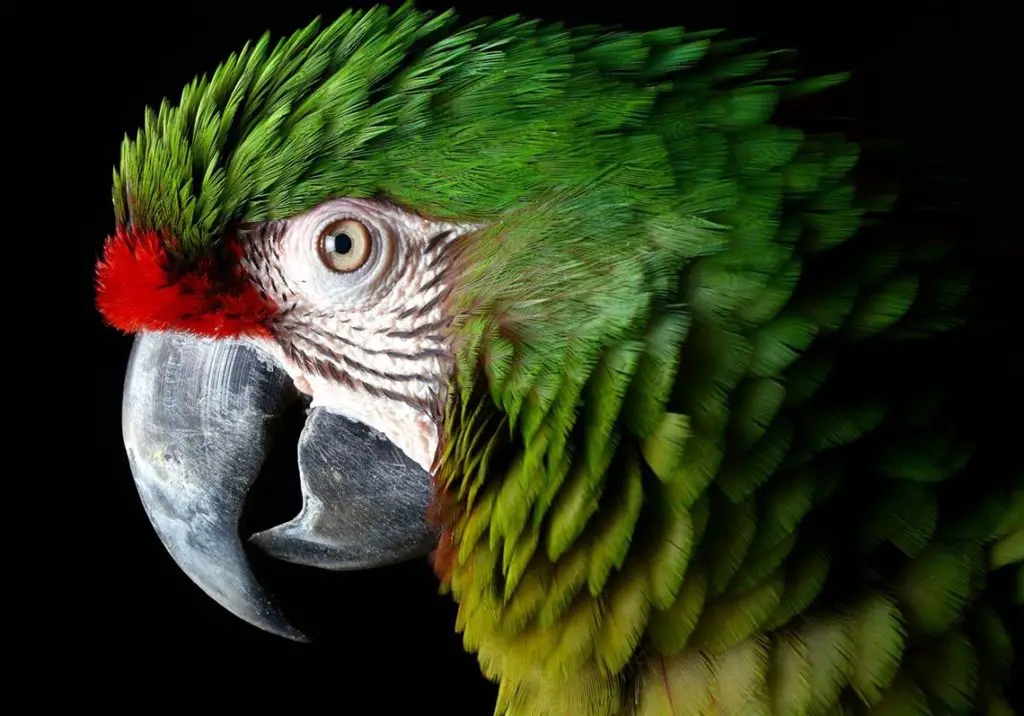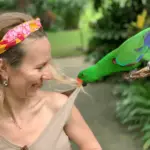
Aspergillosis in parrots is the name for a serious disease encountered in parrots. It sometimes takes the form of a fungus, but can also lead to other disorders. Prevention remains the best weapon to avoid it. This is based on impeccable hygiene.
Ensure irreproachable hygiene of the “habitat” of the parrot, its environment and its living conditions, give it a quality diet, etc. are essential conditions for the well-being of the parrot.
It can also prevent him from developing certain diseases. Aspergillosis has a poor prognosis. A fungus (Aspergillus), can be the cause of mycosis. This fungus grows easily in wet and soiled environments. Hence the importance of good hygiene and good ventilation of the animal’s living space.
Several forms exist: chronic or acute. First, symptoms may take some time to appear and are not significant to the disease.
A respiratory gene, a state of “weakness”, a term plumage, a modification of his voice… are all disorders that must in any case encourage the master to consult the veterinarian who knows the species well.
Young parrots are more sensitive to it
Young birds may be more sensitive to it, due to an immune system that is not yet performing.
It should be noted that this disease if it is not contagious, can affect several subjects as soon as the “conditions” favorable to its development are met.
To refine his diagnosis, the veterinarian has several tools. The main thing is that this disease is taken in time (drug treatment, even surgical) to have chances of being treated and not be fatal to the animal.
The parrot and animal
health insuranceSantéVet, a specialist in dog, cat, and NAC (new pets) health insurance offers a formula that reimburses veterinary expenses in case of diseases and accidents in the parrot.
This includes consultations (including in the context of an emergency), analyses and x-rays, drugs prescribed by the veterinarian, hospitalization, surgeries, etc.
SantéVet’s parrot insurance formula also offers a prevention package (serology) subject to conditions.
Parrots Aspergillosis
Mushrooms are not always good
Ha! The mushrooms! There are oyster mushrooms, chanterelles, and truffles to the delight of gourmets. There are those yeasts that make bread rise and those that ferment hops and other grains to produce a popular drink. Lovers of good beer know this. Other fungi that are called saprophytes actively participate in the ecological balance. They recycle materials that are no longer useful by breaking them down.
Opposed to the good mushrooms, there are those who could be described as “terrorists”. They do not hesitate to parasitize living beings and their presence causes enormous damage. Several fungi have specialized in this art. In parrots, there is such an infection called ASPERGILLOSIS.

Coco the African Grey Parrot is a bon vivant. He talks a lot and is very active. He takes pleasure in destroying the paper at the bottom of his cage as soon as Rosalie, his owner, installs a new one. Such a waste! A little desperate, Rosalie decides to use a more convenient solution. It spreads a good layer of cracked corn ( corn cob) on the floor of his cage. Eureka! Coco is not at all interested in having fun in this place anymore.
Rosalie also finds it very interesting that the product is very absorbent and that it controls odors well. She can even go a few weeks without changing it, nothing shows. It’s been a year since the parrot’s environment has been linked with these little granules when Rosalie notices changes in the behavior of her bird.
Coco’s tone of voice sounds different. She doesn’t worry too much, Coco is such a good impersonator. He must have taken it from TV. Sometime later, Rosalie notices that he tends to run out of steam a little faster. As Coco is still eating well, she decides to wait a bit before consulting. Maybe it’s old age, Coco is still 20 years old …
One morning, when she finds her parrot’s cage, Rosalie notices that things are not going well at all. Coco is at the back of his cage and he is breathing with his beak open. His tail moves at every breath.
There is even a little blood flowing from his nostrils. You have to go quickly to the vet. She takes Coco with a towel and to her surprise, he does not resist. Normally he would have struggled and screamed. He had never accepted being touched. Rosalie notices with amazement his great thinness.
The bone in his chest is very prominent. The parrot’s breathing quickens, wheezing breathing noises are heard and the African gray dies in the arms of its mistress.
The autopsy of this parrot revealed that it died of complications from aspergillosis. His lungs were invaded by the fungus which had also started to colonize the air sacs. The syrinx (the organ that allows birds to produce sounds) was also affected, hence the change in voice that had taken place in this bird.
Death was rapid because a major blood vessel in the left lung suddenly burst. Its wall had thinned dangerously after being badly damaged by the fungus. A big question now arose: where could Coco have become infected, he who always stayed inside and had no contact with other birds?
A microbiological analysis of a few particles of cracked corn, taken from the bottom of its cage, gave the answer: they were contaminated with Aspergillus sp. Thus, over a long period of time, his African Gray had breathed in a large number of spores from its environment.
What can be done to ensure that such a story does not happen again? First, clean the bottom of your parrot’s cage frequently. Any build-up of organic material and moisture provides fungi with an excellent growing medium. It is safe to use cracked corn as long as a wire mesh prevents the bird from touching it.
It should also be changed frequently. The accumulation of stool, food, and moisture from the water bowl greatly promotes the growth of fungus in this type of litter. Second, the annual check-up allows the problem to be detected early and intervened quickly.
Third, remember that the bird is a champion at hiding its symptoms of illness. Weight loss is easily concealed by feathers, and a simple change in personality can sometimes signal a serious problem. Aspergillus sp mainly colonizes the respiratory system.
We note that the African gray, the blue-fronted Amazon, and the mynah are particularly susceptible to this type of infection. The disease is not transmissible from bird to bird. Instead, the bird becomes infected by inhaling spores from a contaminated environment.
Individuals with compromised immune systems ( blue-fronted Amazon and mynah are particularly susceptible to this type of infection. The disease is not transmissible from bird to bird. Instead, the bird becomes infected by inhaling spores from a contaminated environment. Individuals with compromised immune systems ( blue-fronted Amazon and mynah are particularly susceptible to this type of infection.
The disease is not transmissible from bird to bird. Instead, the bird becomes infected by inhaling spores from a contaminated environment. Individuals with compromised immune systems (stress, illness, etc. ) are much more likely to catch the disease. There are medicines to treat aspergillosis, but their success depends on the extent of the disease. Diagnosis of the disease is made by combining the results of several tests ( blood test, x-ray, endoscopy, cultures ).




















